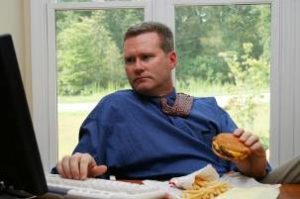What gets rarely mentioned, however, is that it is not so much the dietary principles but rather the underlying lifestyle that sets the Mediterranean diet apart. For example, not rushing things too much and enjoying a leisurely clip are just as important as the food itself. And that does not only apply to food preparation or consumption but to life in general.
The Mediterranean diet as we know it today is inspired by many, often ancient, culinary traditions from southern European and northern African countries bordering on the Mediterranean Sea. It’s not a specific cuisine but rather the product of centuries-old struggles for survival in lands that can be harsh and barren.
“For all the sun-drenched ease we associate with the Mediterranean – in reality little more than a vacationer’s fantasy – there is an undertone of harshness to the region’s beauty,” writes Ayla Alger, co-author of “Mediterranean – The Beautiful Cookbook” (Harper Collins, 1994). “It is indeed remarkable that agriculture has flourished at all in the Mediterranean, the result not only of skillful cultivation but also of the peasant tenacity and hardiness of its peoples.”
By contrast, our lifestyles demand ever-greater speed and efficiency in nearly all aspects of our lives, including our mealtimes. Many of us skip breakfast or grab something from the coffee shop on the way to the office. We work through lunch and watch TV or spend more time on computers and other devices while having dinner, which is usually take-out or something microwavable.
Fast food, an icon of Western culture, is the quintessential opposite of the home-cooked family meal.
It is available almost anywhere and at all times; it comes ready to eat; it can be consumed alone; it doesn’t require a table or even a plate; and its nondescript taste never varies. Instead of bringing us together, it allows us to keep to ourselves, we don’t even have to get out of our cars if we don’t want to. As such, it doesn’t just impact our physical health but our entire well-being, including the quality of our familial and social life.
We must pay more attention to the consequences of our constantly accelerating world, warns Jay Walljasper, a contributing editor to National Geographic and author of “All That We Share.”
“The human time world is no longer joined to the incoming and outgoing tides, the rising and setting sun, and the changing seasons,” he says. “Instead, humanity has created an artificial time environment punctuated by mechanical contrivances and electronic impulses.”
Our eating habits are a direct reflection of our lifestyle that is becoming increasingly unsustainable, says Walljasper. Feeding ourselves has become just one of the countless activities we engage in day in and day out. It has no special meaning. There is no attention being paid, no gratitude felt. It’s just consumption.
It wasn’t always like this – and it doesn’t have to continue this way.
“People want to slow down because they feel that their lives are spinning out of control,” he says.
Polls have shown that a majority of Americans would accept pay cuts if they were given more time off in return.
The desire to slow down and take more time for things that really matter can become a reality at any moment and without much ado. Walljasper describes his own “conversion” to a slower-paced existence like this:
“I’ve started the “Slow Is Beautiful” revolution in my own life – right in the kitchen, scaling back my busy schedule to find more time for cooking good meals and then sitting down to enjoy them in a festive, unrushed way with my wife, son and friends. Even cleaning up after dinner can offer a lesson in the pleasures of slowness, as I learned a while back when our dishwasher went on the fritz. […] I’d put some jazz or blues on the stereo and sing along, or just daydream as I stacked dishes and glasses on the drying rack.”
Who says you can never go home again?
———————————————————————————–
 Timi Gustafson, RD, LDN, FAND is a Registered Dietitian, health counselor, book author, syndicated newspaper columnist and blogger. Timi completed her Clinical Dietetic Internship at the University of California Medical Center, San Francisco. She is a Fellow of the Academy of Nutrition and Dietetics, an active member of the Washington State Dietetic Association, and a member of the Healthy Aging, and Wellness Nutrition practice groups. USA.
Timi Gustafson, RD, LDN, FAND is a Registered Dietitian, health counselor, book author, syndicated newspaper columnist and blogger. Timi completed her Clinical Dietetic Internship at the University of California Medical Center, San Francisco. She is a Fellow of the Academy of Nutrition and Dietetics, an active member of the Washington State Dietetic Association, and a member of the Healthy Aging, and Wellness Nutrition practice groups. USA.
Reprinted with the author’s permission.





